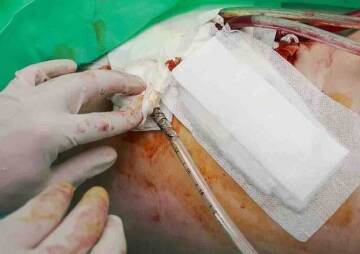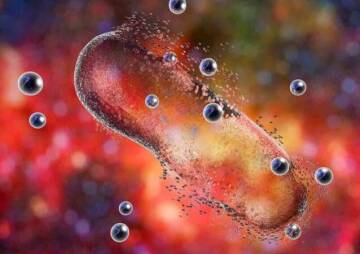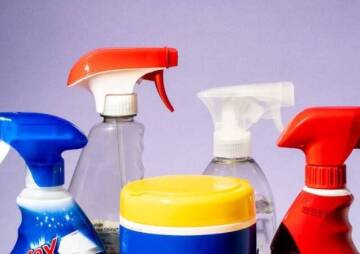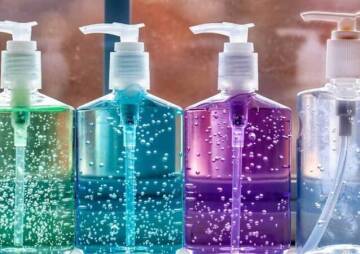-
Category
Craniomaxillofacial Surgery
Orthopedic Surgery
Spine Surgery
Orthopedic Implants
Hip Surgery
Knee Surgery
Pectus Excavatum
Bone Graft
Disinfectants
Healthcare
Non-toxic hospital grade disinfectants
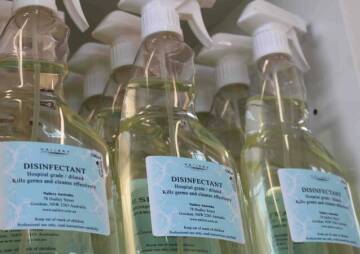
Due to the importance of cleaning medical centers and hospitals from infections and microorganisms, various disinfectants have been produced. However, the use of non-toxic hospital disinfectants is safe and stable.
Prevention and reduction of hospital-acquired infections' (HAIs) prevalence, ensuring all patients, staff and visitors’ health and safety, in large and small hospitals is very important. Physicians, nurses and medical staff in hospitals do their best to provide excellent health care services, along with this effort, it is also important to have a healthy treatment environment free of infections. Sterilizing and disinfecting all medical and sanitary facilities and equipment should be a priority to protect everyone who uses the hospital environment, especially those who are vulnerable to secondary infections, have weakened immune systems or are recovering.
Due to the importance of cleaning medical centers and hospitals from infections and microorganisms, different types of disinfectants have been produced. Nevertheless, the use of non-toxic, safe and sustainable hospital disinfectants, which has all the benefits of traditional chemical cleansers while are free of chemicals that harm people, animals or the environment; has become hot these days.
For more information about these non-toxic hospital grade disinfectants, do not miss this article.

What to expect from hospital disinfectants?
Everyone expects hospitals or treatment environments to be completely clean. Today, various disinfectants are available to clean treatment facilities. In addition to disinfection, these materials also perform cleaning and sterilization. They are formulated to deal with pathogenic infections and other threats in a medical, hospital or a therapeutic environment.
According to the EPA definition, hospital disinfectants must eliminate two bacteria Pseudomonas aeruginosa and Staphylococcus aureus, and therefore are even more effective than a standard disinfectant.
These substances need to be in contact with microorganisms for a long time to be able to eliminate pathogens, but at the same time, they must have sufficient speed and safety and easy to use. In addition, it is necessary to inflict the least damage to medical equipment and, of course, the staff.
What are the problems caused by using hospital disinfectants?
To use traditional and chemical cleaning products, it is necessary to make sure that they are used according to the correct instructions, which most employees will not properly understand or fail to implement in the correct method. Therefore, using them will have adverse consequences. Cancer, reproductive disorders, respiratory diseases (including occupational asthma), eye and skin irritation, central nervous system disorder and other human health effects are among the real and lasting chemical damages.

Sometimes surfaces and equipment used by chemical disinfectants are also damaged. Even keeping them has its own problems. Some of these products contain persistent, bio accumulative and toxic chemicals (PBT) are classified as hazardous wastes and cause environmental pollution during production, use or disposal.
For example, triclosan, an antibacterial that is increasingly available in liquid detergents. It can increase the ability of bacteria to resist antibiotics and pose a long-term threat to wildlife and human health. Some other common hospital cleaning products, such as glutaraldehyde and ethylene oxide also carry serious health effects.

What solution is recommended?
Non-toxic hospital disinfectants do not have many chemical disinfectant problems. They are environmentally friendly and have the lowest rate of complications on staff and patients. In addition, they are hassle-free to store and transport, and the waste caused by their utilization usually does not harm the environment. Most of these disinfectants are non-caustic, non-corrosive, non-flammable, oil-free, chlorine-free, ammonia-free, and contain no phosphates and dangerous acids.
Types of non-toxic hospital disinfectants
There are relatively safe non-toxic disinfectants that have few side effects, some of which are not hospital grade.
Hydrogen Peroxide
One of the most non-toxic options for disinfection is hydrogen peroxide. It is usually used in concentrations of 3 to 5 percent. To use, just leave it on the desired surface for 5 minutes. Since hydrogen peroxide is converted to water and oxygen after a short time, it does not need to be cleaned.
Nano Silver
Silver particles eliminate a variety of fungal infections, bacteria and viruses. Bacteria have no immunity against silver and are suppressed and destroyed by silver ions. At the same time, it does no harm to humans because these fine particles are pure silver metal and can dissolve in the body if consumed in the right amount.
Visit Hospital Grade Nano Silver Disinfectant Products
Alcohol, ethanol, isopropyl alcohol, lactic acid, citric acid, peroxyactic acid and sodium bisulfate are also relatively safe disinfectants.
The characteristics of these hospital disinfectants are listed in the table below.

Final Word
An important feature of hospital disinfectants is the elimination of two bacteria, Pseudomonas aeruginosa and Staphylococcus aureus. However, today the non-toxicity of these substances has become very important. Non-toxic hospital disinfectants do not harm the health of medical staff, patients and the environment. It is not true to say that, a sterilizing substance has 100% no side effects, but there are relatively safe hospital disinfectants and some of them are mentioned in this article.
